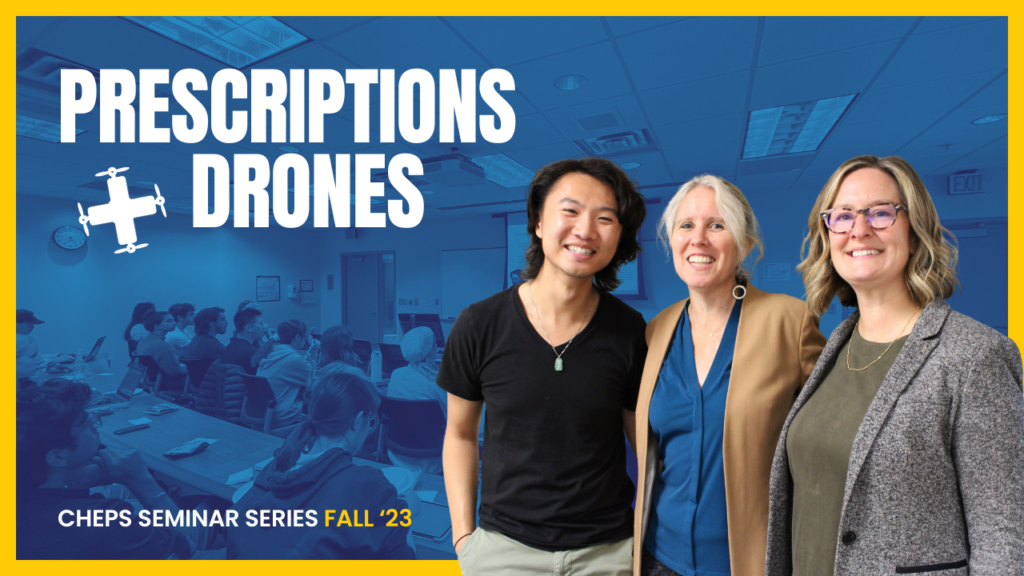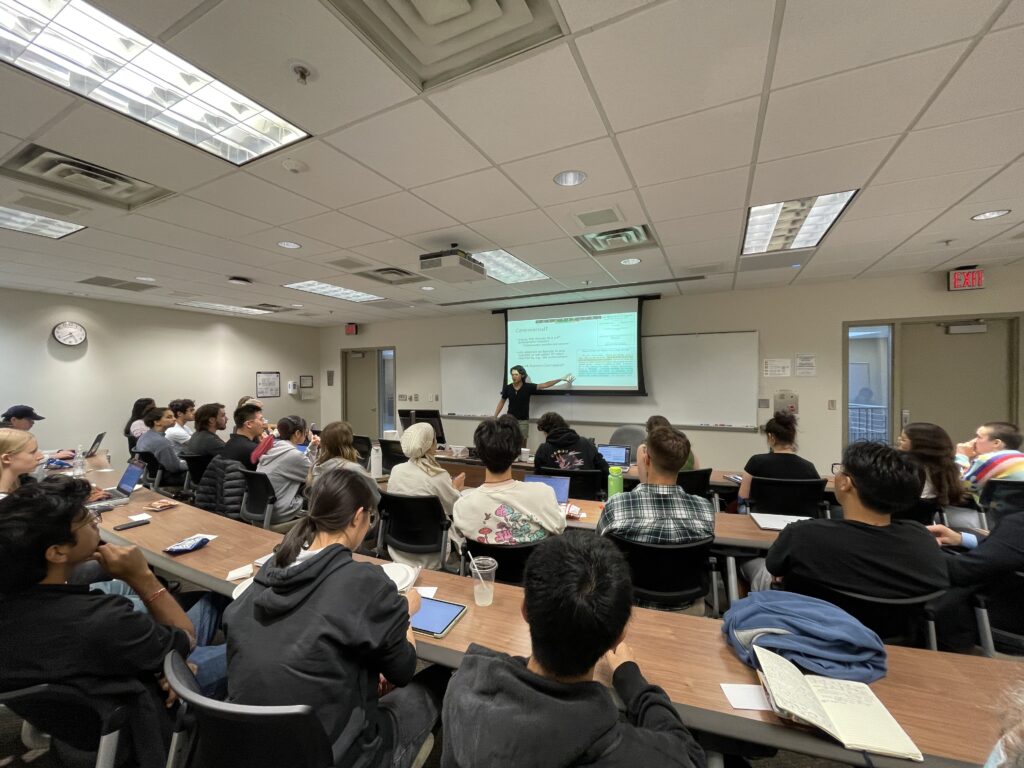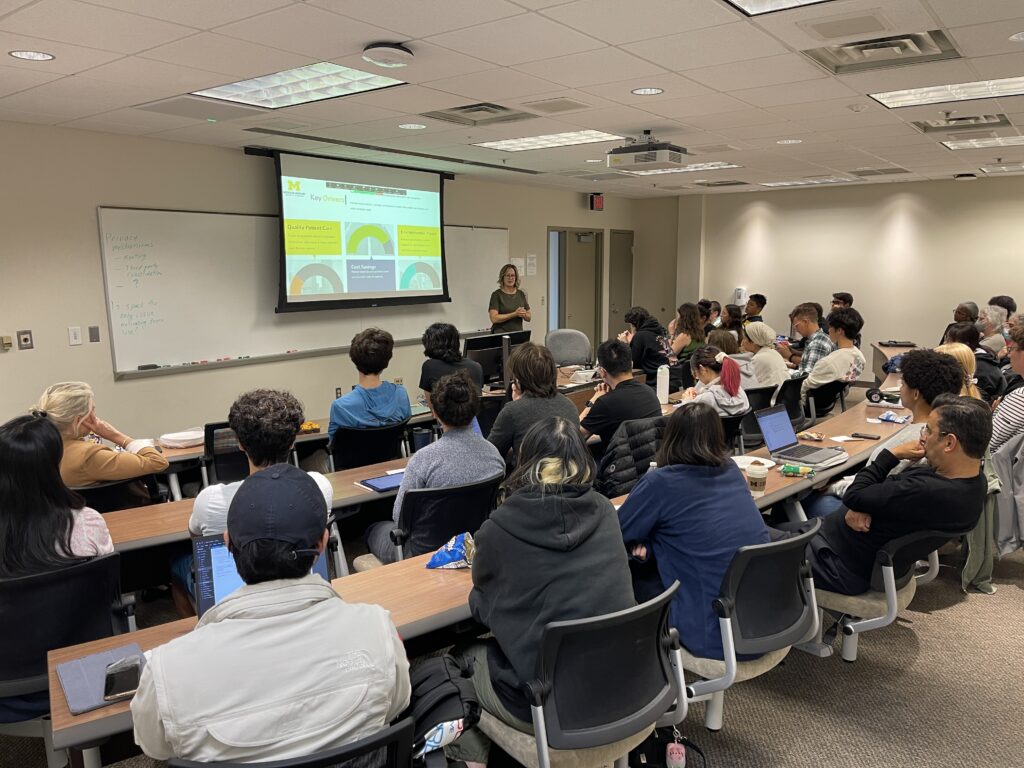
This week at the Providing Better Healthcare Through Systems Engineering Seminar Series, students, staff, faculty, clinicians, and community members had the opportunity to discuss the intersection of two distinct industries: pharmaceuticals and aerospace.
Drones and privacy
Max Li, PhD, MSSE is an Assistant Professor of Aerospace Engineering and Industrial and Operations Engineering at U-M. He joined us on Monday to offer his expertise on drones—a novel subject for many working in healthcare.
One of the main considerations necessary when speaking about drones is privacy. Just like with commercial air traffic, tracking and surveillance (via radar, satellites, etc.) is mandated by law for all drones. The Federal Aviation Administration has created Remote Identification or, Remote ID, to track the position, velocity, altitude, and owner(s) of these flying bodies.
Despite concerns about Remote ID’s potential to threaten the public’s fourth amendment right against unreasonable searches and seizures by the government, the DC Circuit Court has ruled that Remote ID is indeed constitutional…and drones are coming.
Max clarified that “The primary purpose of Remote ID isn’t so people can track what you’re delivering. The primary purpose of Remote ID is safety, traffic management, [and] aerospace traffic management.”
Still, it’s not just the government that folks may be worried about when it comes to drones. Drone data is also publically broadcasted on public Bluetooth channels. This data could feasibly be recorded and sold for profit.
Vendors may also not want their rivals to be able to gain insight into their customers, thereby losing a competitive edge. Additionally, customers (or patients) may be hesitant to allow others insight into what they are receiving with more sensitive purchases—a drone leaving McDonald’s and arriving at someone’s door may be one thing, but a drone leaving a pharmaceutical warehouse and arriving at your door may be another.
To diminish the accuracy rate a person would have when guessing what sort of item a person was receiving via drone, the group provided two potential solutions: (1) having drones stop at multiple points/locations, or “dummy vendors,” and (2) have drones with greater capacity carry more than one item.
To bridge these safety concerns with those inherent to pharmaceutical delivery, we turned things over to Dana Habers, MPH, Chief Innovation Officer of U-M Health and Chief Operating Officer of its Pharmacy.
Pharmaceutical air delivery
U-M Health’s in-house pharmacy team of 600 excels at helping patients within home, ambulatory, virtual, and inpatient settings. Having partnered with Zipline, a drone delivery company with origins in flying blood and other crucial medical products throughout Rwanda, they are preparing to launch a Drone Delivery Service of their own in 2024.
From her position leading the University of Michigan Health’s Office of Innovation, Dana imagines three high-impact areas that this program could improve: quality patient care, cost savings, and environmental impact.
Dana’s presentation revealed that “Each drone delivery will produce 97% fewer CO2 emissions than a combustion engine vehicle and open doors for future opportunities to improve packaging materials.” The speed offered by drones also offers the potential to eliminate, or at least decrease, usage of non-biodegradable preservation materials like styrofoam coolers and gel packs.
“Our ability to really improve our carbon footprint is tremendous,” Dana shared.
She also highlighted the significant challenges that many face when it comes to physically receiving their prescriptions, “especially for some of the patients [they] serve who are really unwell, who may not want to leave the house and expose themselves, who are immunocompromised, who may just not feel well enough to go to the drug store, who may not have transportation.” Accessibility is one of the greatest gifts offered by drone deliveries. It is worth noting, however, that controlled substances will not be eligible for this service.
Questions, answers, and flying monkeys
Once both Max’s and Dana’s presentations had concluded, the group was allowed time for thoughtful (and often tricky) questions.
Topics raised included the following:
- Delivery radii
- Charging stations
- Extreme weather
- Insurance policies
- Socioeconomic equity
- Tree interference and general location eligibility
- Decoy deliveries
- Changing frequency of pharmacist-patient interactions
- Bidirectionality enabling pickups as well as drop-offs
Finally, the group threw out some “flying monkeys” (out-of-the-box ideas which, even if they don’t solve a challenge, may ultimately lead to an idea that does). One idea was to utilize drones for non-urgent deliveries to lessen road traffic. Pharmaceuticals can then be delivered more quickly via trucks.
Another idea shared by Saif Benjaafar, PhD, MS—recently welcomed Seth Bonder Collegiate Professor in U-M’s IOE department—was to have a larger “mother ship” drone operate similarly to a traditional delivery truck, carrying multiple packages and travelling from neighborhood to neighborhood.
Join us
Next week’s session promises to be equally engaging as we discuss “Exploring Ethics and Equality in Healthcare: Voluntary Consent for Bone Marrow Transplant and Other Topics.” Join us then, Mon. September 25th, from 4:30-6:00 PM in IOE 1680.
To RSVP to one or more sessions (or to request access to a session recording), please email [email protected].
— Written by Hannah Buck, CHEPS Staff


